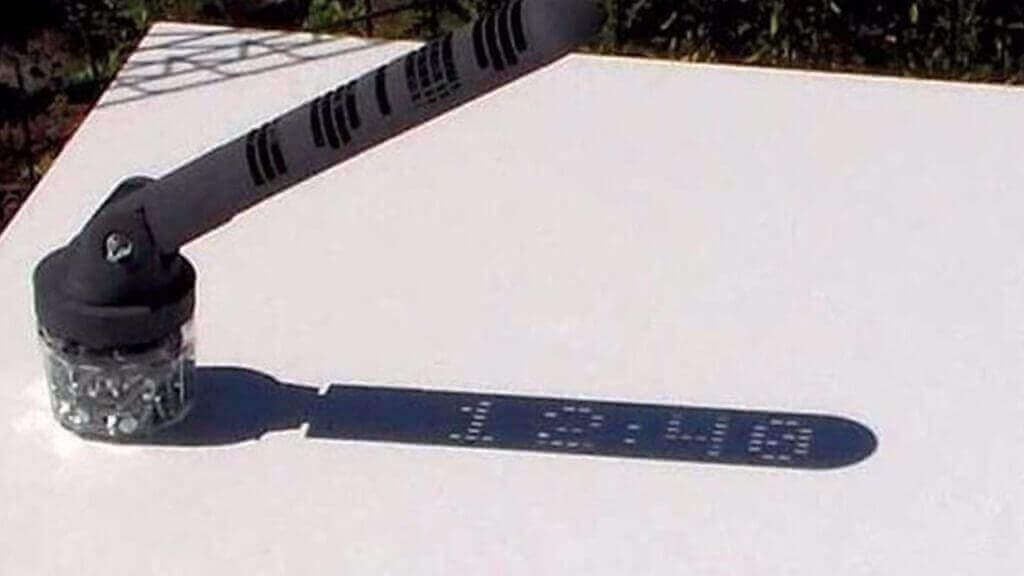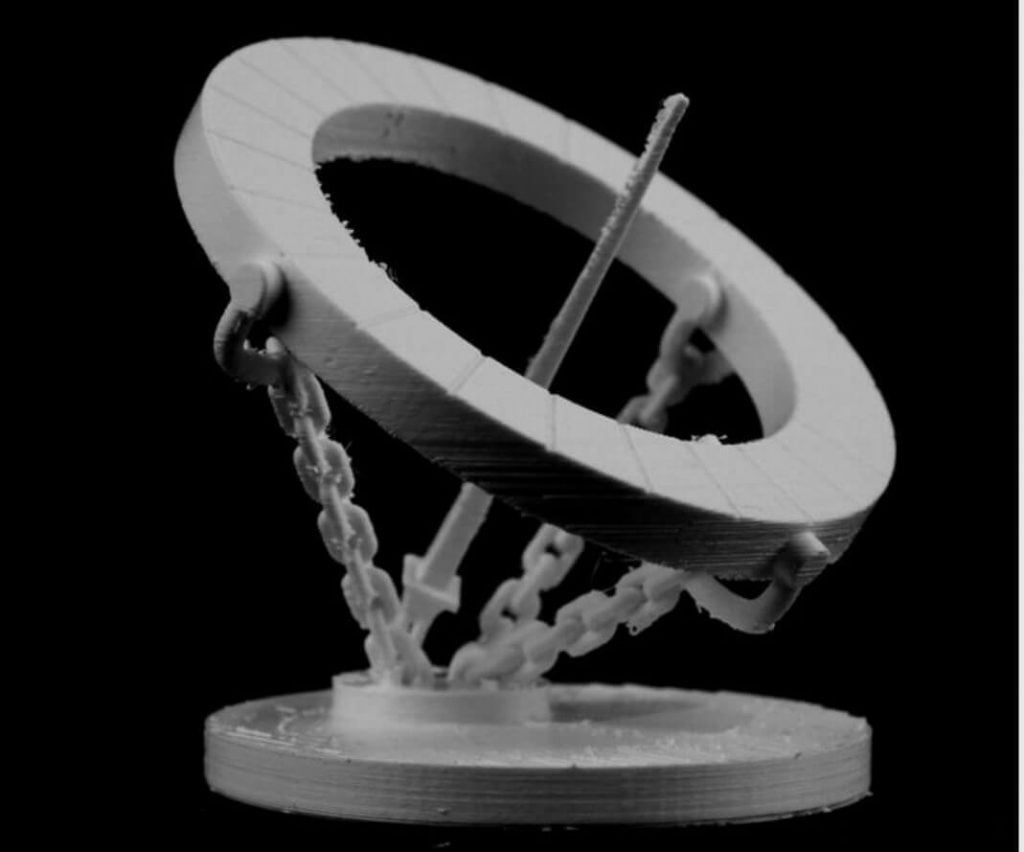


holder: to print (or not) a holder which fixes the gnomon (with a screw).a "boat", which is an optimized shape because each hole has the same depth.Digits duration: the duration of each text, according to the sun rotation.quick_fox.stl: The quick brown fox jumps over the lazy dog.For example, if you want to display "Hello", then "world" few minutes later, set this field to Hello world. Text: the text displayed on the shadow of the sundial, for each position, separated by semi-colons.Available Customizer options Main options If you are using OpenSCAD on you own computer, you can increase the value of parameters Tun off rendering at and cache size in the OpenSCAD preference window. If you are using the Customizer app, just ignore them. Note: When rendering the sundial, you may get CGal warnings saying there are a lot of elements. The attached STL files are not required, it's just few items made with the Customizer app to show you what you can do (see Text option bellow). See the simulation on Youtube for the quick_fox.stl example. In addition, you can customize a lot a others parameters, like the digits duration or the gnomon shape. The displayed text can be as long as you want, and can contain all usual characters. The customizable shadow displayĬontrary to the Mojoptix sundial, this one allows you to display, instead of the clock numbers, whatever and whenever you want. Its video podcast describes this sundial in details. So you can even adjust for Daylight Saving Time. You can precisely adjust the displayed time simply by rotating the gnomon (the magic box that displays time).

The sundial displays time (with actual digits !!) from 10:00 until 16:00, updating every 20 minutes. This allows to display the actual time with sunlit digits inside the sundial's shadow. The shape of the sundial has been mathematically designed to only let through the right sunrays at the right time/angle. It's all just a really super-fancy shadow show. It's a Sundial displaying the time inside its shadow, with actual digits ! This work is inspirated by the Mojoptix project Mojoptix project, who describes the sundial as it: See the GitHub repository and the Thingiverse page. No batteries, no motor, no electronics, only a 3D-printed object and its shadow.
#Sundial digital clock 3d series
He has open-sourced the project, releasing the OpenSCAD script for anyone who wants to tinker or build their own. It is an extremely impressive project, and there is more to come: this is the first in a new podcast series called Mojoptix from that will cover similar projects. Rather than simply create it as a static 3D model, he used OpenSCAD to build it algorithmically, using the program to create the matrix for each of the numbers he wanted the sundial to show, then to combine these at the appropriate angle into a single, 3D printable model. In the video, he carefully explains how he designed the sundial. We have seen a few sundial projects before, ranging from LED variants to 3D printed ones, but this one from takes it to a new level. So, it is nice to see these two combined in this impressive project: the 3D printed digital sundial. You don’t get much more old school than a sundial, and more new school than 3D printing.


 0 kommentar(er)
0 kommentar(er)
